If you’re planning on moving to Oregon, add these cities to your list.
Home to lush landscapes, renowned coastlines, and abundant recreation opportunities, Oregon has it all. The state can generally be split into two sections, divided by the Cascade Mountains: Western Oregon and Eastern Oregon. The Columbia River and its famous Gorge defines the state’s northern border with Washington. Oregon and Washington have similar climates, topographies, and cultures, so residents relocating from one to the other is fairly common.
Western Oregon includes the Oregon Coast, Oregon Coast Range, and Willamette Valley, and is where a majority of the state’s population lives. Cities like Portland, Salem, Eugene, Corvallis, and Cannon Beach are all located here. The region has a mild, marine climate and sees quite a bit of rain.
East of the Cascades is Eastern Oregon, which is located on the Columbia Plateau and is much drier than Western Oregon. Bend, Hermiston, and Pendleton call this area home, with the Blue Mountains, Wallowa Mountains, and Alvord Desert popular destinations. The region sees hotter summers and colder, snowy winters.
But which cities in the Beaver State are the best for you? In this Redfin article, we’ve uncovered the best places to live in Oregon, ranking them on qualities such as affordability, navigability, and number of amenities. You can find more information about our methodology here or at the bottom of the article.
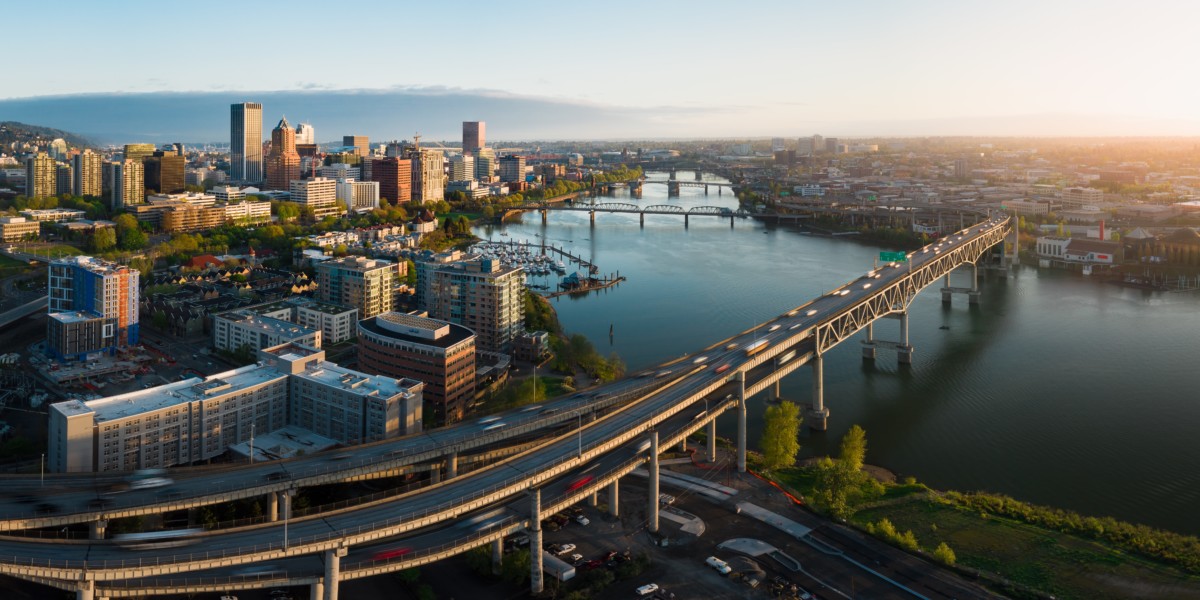
1. Portland, OR
| Population:
635,067 |
Average Commute Time:
26.2 minutes |
Per-Capita Income:
$43,811 |
| Median Sale Price:
$508,250 |
Median Rent Price:
$1,802 |
Unemployment Rate:
3.8% |
Portland tops our list as the best place to live in Oregon. Known for its quirky vibes, rainy weather, and massive public parks, Portland has it all. Often compared to its northern neighbor Seattle, Portland is built into the hills along the Willamette River, just south of the Washington border. The city is also just an hour and half from both the coast and Mount Hood, making for incredible seasonal recreation opportunities.
Portland is famed for its eclectic, small-town feel and weird, indie culture – and it’s not afraid to lean into it. The Filmed by Bike Festival, Pedalpalooza, Geek Week, and Rose City Comic Con are some of the most popular annual events. Portland also hosts the largest iteration of the World Naked Bike Ride along its many bikeable streets. The number of cycling events is apt, given that it’s the second-most bikeable city in the U.S.
On the whole, Portland is in love with bikes, green spaces, and great cuisine, and has a long history of being on the forefront of social, governmental, and environmental change. Portland’s public transportation is also top-notch.
Some of the most famous attractions in Portland include Forest Park, Powell’s City of Books, the Portland Saturday Market, and TomMcCall Waterfront Park. The area is also home to dozens of delicious globally-inspired eateries, like Dirty Lettuce, Gabbiano’s, and Urdaneta. And perhaps most famous of all are the city’s hundreds of food carts (trucks) serving all manner of dishes.
Portland homes for sale | Portland houses for rent | Portland apartments for rent
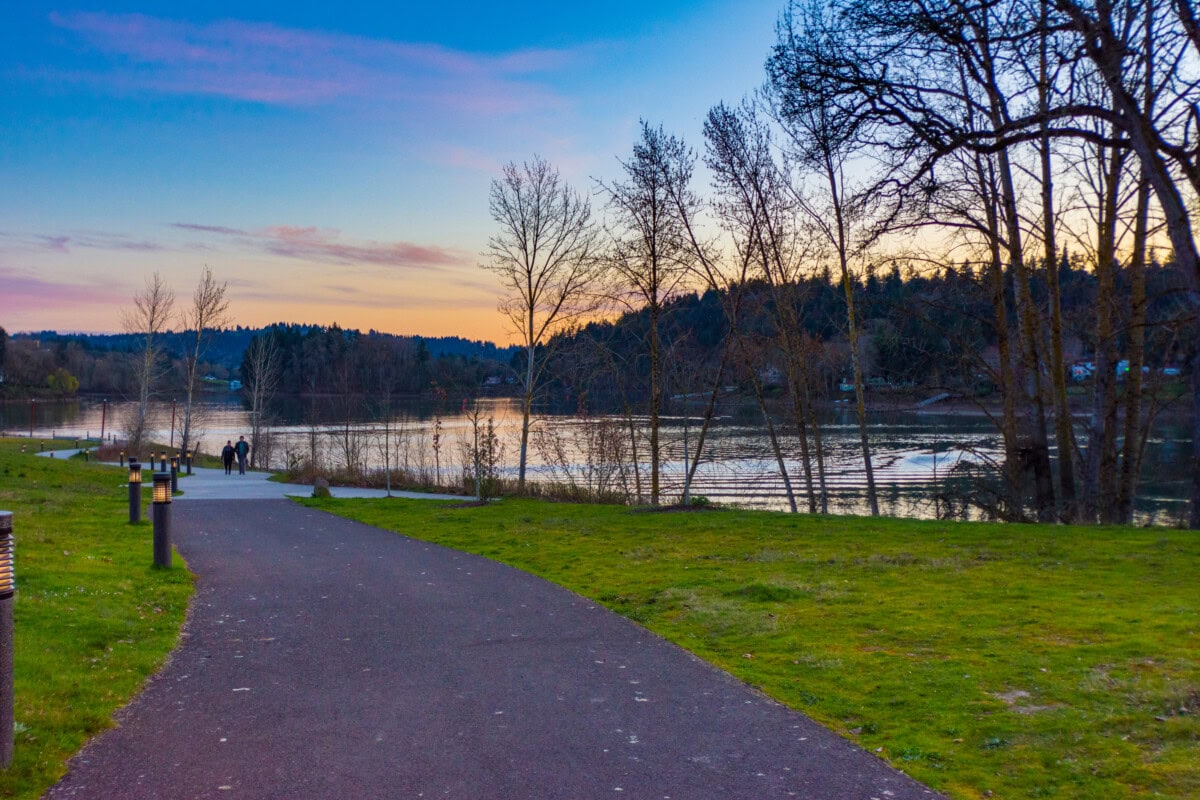
2. Milwaukie, OR
| Population:
21,375 |
Average Commute Time:
27.6 minutes |
Per-Capita Income:
$38,020 |
| Median Sale Price:
$527,500 |
Median Rent Price:
$2,218 |
Unemployment Rate:
3.2% |
Just a few miles southwest of Portland, Milwaukie is second on our list of the best places to live in Oregon. The city is much slower paced than Portland, offering residents a quiet, green, suburban feel while still maintaining a very walkable and bikeable layout. It’s also very convenient to live in Milwaukie and commute into Portland using the MAX Orange Line. House and rent prices are a bit higher, though.
Milwaukie is officially known as the Dogwood City of the West for the many dogwood trees that bloom every spring. In fact, the city comes together every year on May 21st to celebrate both its incorporation and its gorgeous blooming trees. This love of nature is reflected in the dozens of gorgeous parks, trails, and viewpoints that dot the area. Sellwood Park, the Crystal Springs Rhododendron Garden, and the Springwater Corridor Trail are beloved natural attractions.
Milwaukie is also a city that embraces the old and new. Along 21st Ave downtown, modern bars and restaurants like Ovation Bistro & Bar and Decibel Sound & Drink are a few blocks from Wunderland Cinemas and Milwaukie Bowl, a classic cinema and bowling alley. The historic Oaks Amusement Park is also just three miles from downtown along the Willamette.
Milwaukie homes for sale | Milwaukie houses for rent | Milwaukie apartments for rent
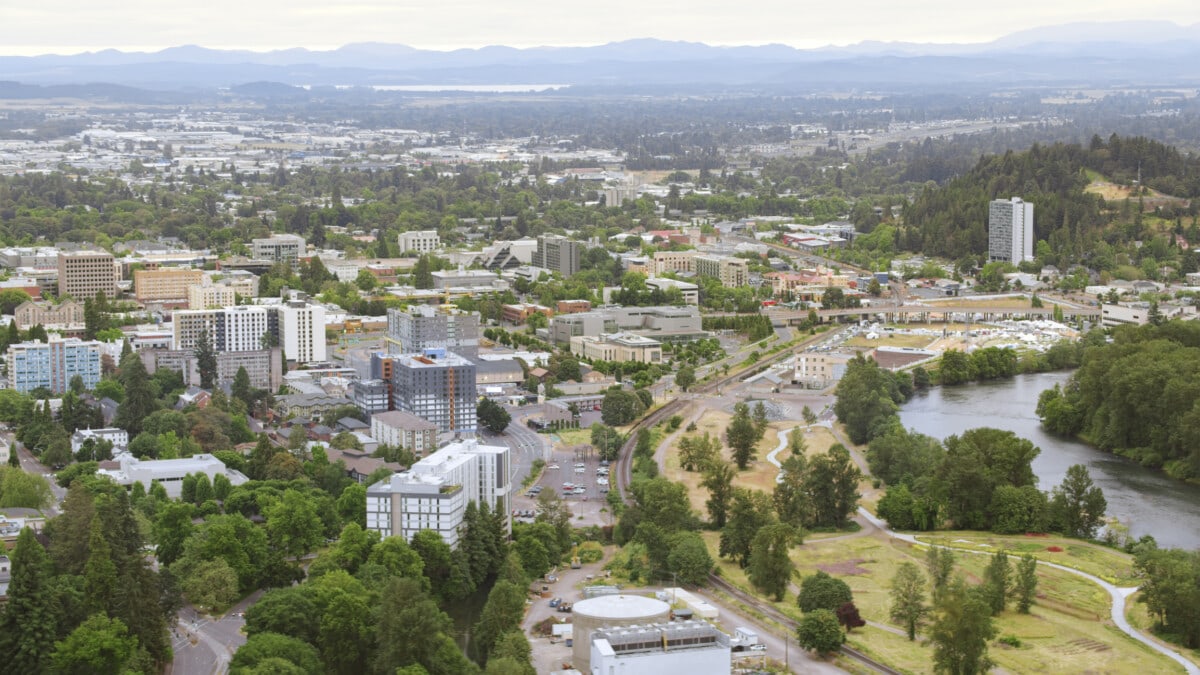
3. Eugene, OR
| Population:
177,923 |
Average Commute Time:
18.5 minutes |
Per-Capita Income:
$32,576 |
| Median Sale Price:
$490,000 |
Median Rent Price:
$1,774 |
Unemployment Rate:
4.7% |
Eugene comes in as the third-best place to live in Oregon. Two hours south of Portland and adjacent to Springfield along the Willamette River, Eugene is home to the University of Oregon (UO). The city also boasts ample outdoor recreation, local shops and markets, and historic architecture. It’s also the birthplace of Nike. Unsurprisingly, Eugene is obsessed with running and is known as TrackTown USA, holding the annual Prefontaine Classic at UO’s Hayward Field. A number of Olympic athletes also train in Eugene.
Similar to Portland, Eugene is equidistant from the Oregon coast and Cascade mountains – just about two hours by car each way – and offers plenty of outdoor recreation within city limits as well. The gorgeous Alton Baker Park and Hendricks Park are local hotspots, while dozens of walking and cycling trails and bridges make it easy to get around.
Eugene is also in the South Willamette Valley, meaning wineries, great cuisine, and local agriculture are all nearby. King Estate Winery, Morning Glory Cafe, and Sabai Cafe & Bar are especially popular options.
Importantly, Eugene has grown considerably in the past several years. It used to be a fairly small, affordable, and eclectic college town, but as more people moved to the area and the university grew larger, housing, rentals, and the general cost of living grew alongside it. However, Eugene is still more affordable than other Northwest cities like Portland and Seattle.
Eugene homes for sale | Eugene houses for rent | Eugene apartments for rent
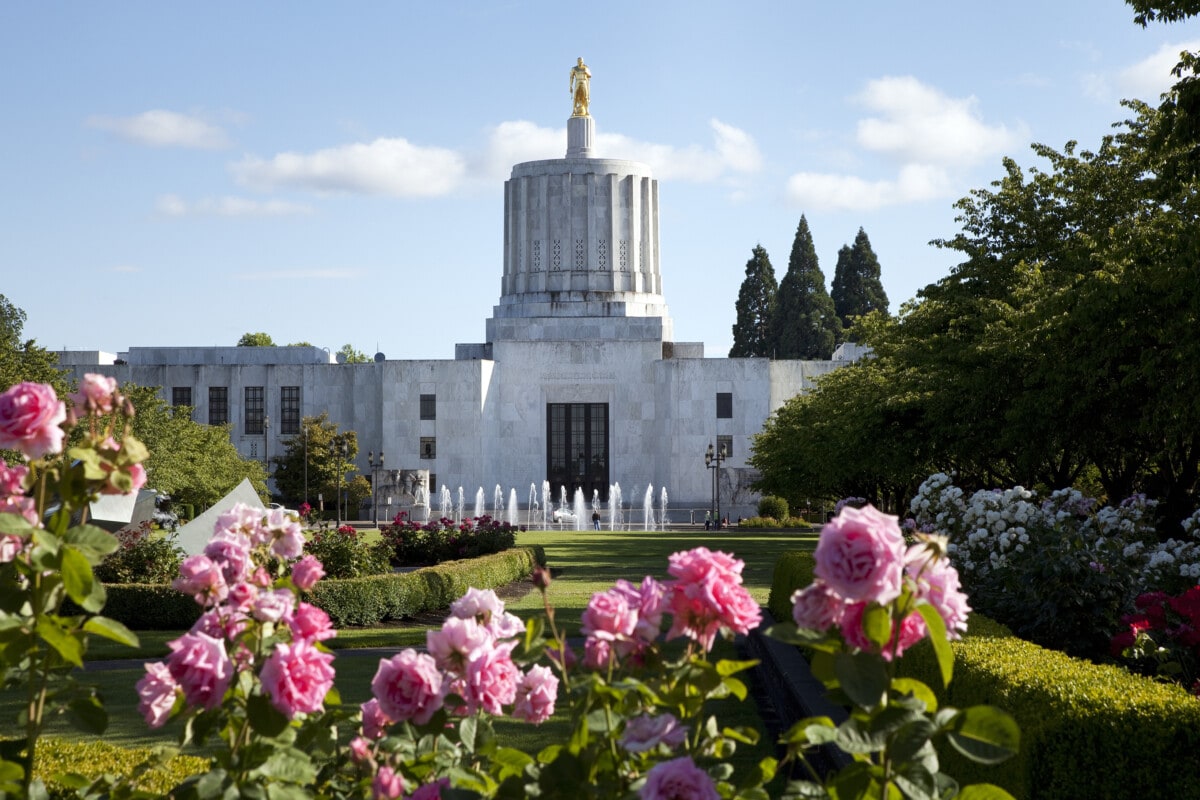
4. Salem, OR
| Population:
177,487 |
Average Commute Time:
22.7 minutes |
Per-Capita Income:
$29,608 |
| Median Sale Price:
$432,500 |
Median Rent Price:
$1,461 |
Unemployment Rate:
3.8% |
Next on our list is Salem, the capital of Oregon. Located between Eugene and Portland along the Willamette River, Salem is in the heart of the fertile Willamette Valley and surrounded by gorgeous state parks, forests, and vineyards. Willamette University calls the city home and even offers internships at the capitol building for those curious about local government.
Salem has a reputation for being fairly quiet compared to Portland and Eugene, but it has a lot going for it. Perhaps most famous is the regional wine scene, highlighted by the Honeywood Winery, Redhawk Winery, and Cherry Hill winery. Eola Hills Wine Cellars even offers an all-you-can-eat Sunday Brunch. Commuting to other cities is also fairly easy: just hop on the Amtrak train and you can get to Portland and even Seattle within a few hours.
Outdoor recreation is another major benefit of living in Salem. You’re within two hours of the Cascades and the coast, and within walking distance to plenty of local parks. Minto-Brown Island Park is one of the largest parks in the area and offers trails, a golf course, and riverside activities year-round.
Like most cities along the Willamette Valley west of Cascades, Salem sees fairly rainy weather from October through April, with late spring and early fall providing the most enjoyable weather. An increase in wildfires, heat waves, and other extreme weather has made summers more challenging, especially since most homes don’t have air conditioning.
Salem homes for sale | Salem houses for rent | Salem apartments for rent
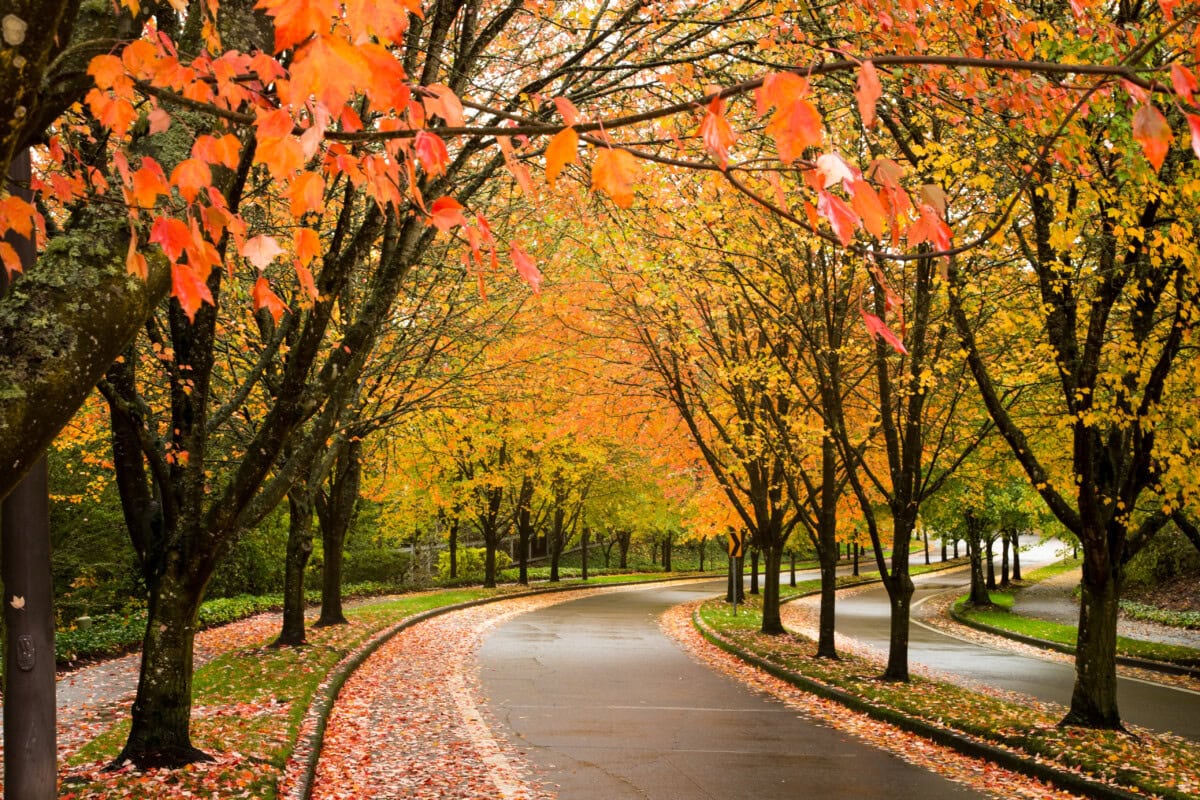
5. Tigard, OR
| Population:
55,762 |
Average Commute Time:
24.2 minutes |
Per-Capita Income:
$40,767 |
| Median Sale Price:
$601,000 |
Median Rent Price:
$2,047 |
Unemployment Rate:
2.6 % |
Tigard comes in at number five on our list of the best places to live in Oregon. Just south of Beaverton, Tigard is a suburb of Portland and a popular spot for people who enjoy a slightly slower pace of life. However, the city still boasts plenty of lively hotspots, including Pizza Caboose, Washington Square Mall, and the Broadway Rose Theatre Company.
Pedestrians, cyclists, and outdoor recreation are heavily prioritized in Tigard. Most roads are tree-lined and have designated bike lanes and well-maintained sidewalks with access for people with disabilities. For a longer outing, Fanno Creek Trail is one of the most popular routes for runners and walkers, connecting Tigard with neighboring suburbs Beaverton and Tualatin, and even extending to Portland.
Parks are everywhere as well. Greenway Park, Summerlake City Park, and Dirksen Nature Park are popular spots. And just outside the city, the Tualatin River National Wildlife Refuge and Tryon Creek State Natural Area provide possibilities for longer outings.
Commuting to Portland may be a challenge though, as the main highway (Pacific Highway) often gets incredibly crowded during rush hour. Highway 217 likely won’t help either. There are plenty of direct bus routes from Tigard to Portland, but no train service. The slightly higher cost of living also pushes it down in rankings.
Tigard homes for sale | Tigard houses for rent | Tigard apartments for rent
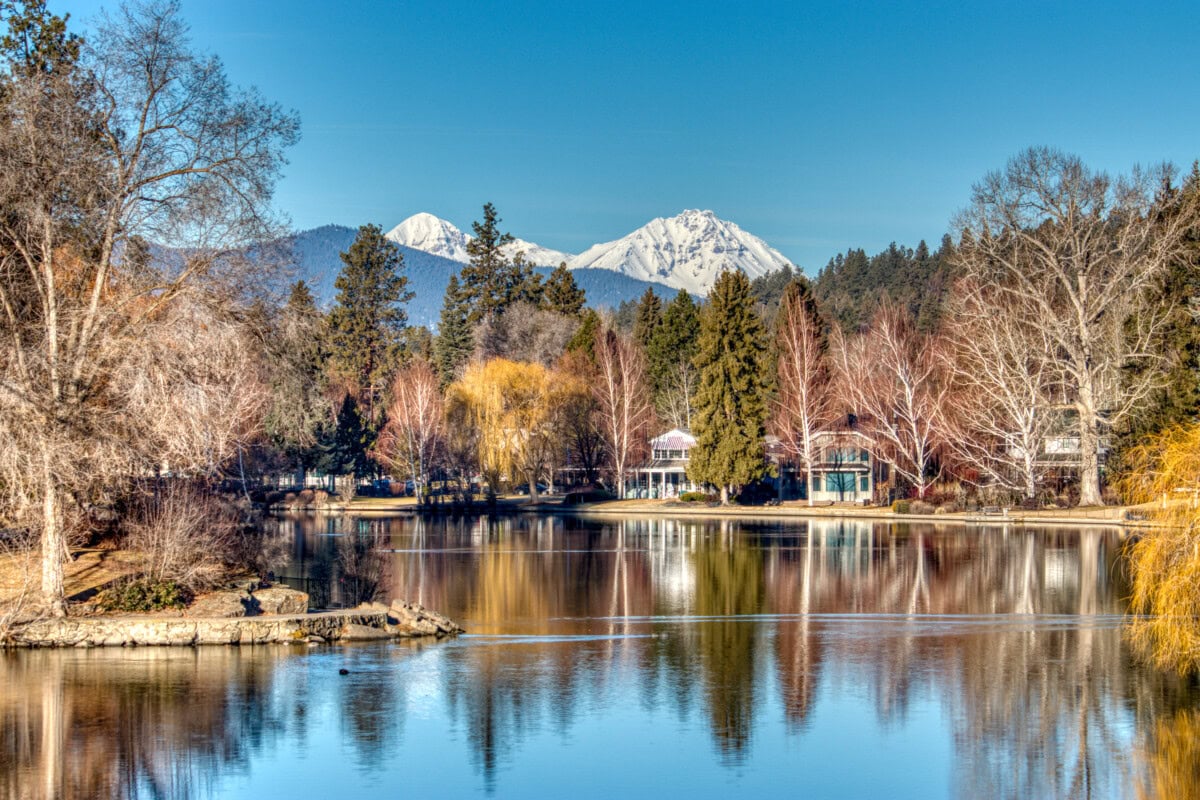
6. Bend, OR
| Population:
103,254 |
Average Commute Time:
16.6 minutes |
Per-Capita Income:
$39,932 |
| Median Sale Price:
$700,000 |
Median Rent Price:
$2,565 |
Unemployment Rate:
3.0% |
The only city on our list east of the Cascades, Bend, OR comes in at number six. Sitting on the Deschutes River three hours southeast of Portland, Bend is a fast-growing outdoor haven known for its four-season recreation, small-town feel, and historic downtown.
Bend is just a short drive away from Mount Bachelor, Mount Washington, the Three Sisters mountains, and the Deschutes National Forest, all of which are perfect for summer and winter recreation. Skiing, hiking, climbing, cycling, and running are all popular options.
Within the city, it feels as though you’re already in the wilderness; local and regional parks and trails are woven into the fabric of the city. The Deschutes River Trail, Shevlin Park, Larkspur Trail, and the Pilot Butte Trail are great spots.
Bend’s climate is markedly different from Western Oregon; it’s primarily dry and sunny, with moderately warm days and cool nights. The city sits at 3,623 feet in elevation just east of the Cascade Mountains, and is technically considered a high desert. This means temperatures can vary widely from day to night, and especially between seasons. Summers are usually dry and fairly hot, while winters can be cold and snowy. Temperatures are generally moderate, though.
One growing concern about the area is the wildfire and air quality risk during the summer and early fall. In recent years, Bend has seen multiple weeks of unhealthy air quality due to wildfire smoke. If you’re considering moving to the area, make sure you understand how to maintain good indoor air quality.
Bend homes for sale | Bend houses for rent | Bend apartments for rent
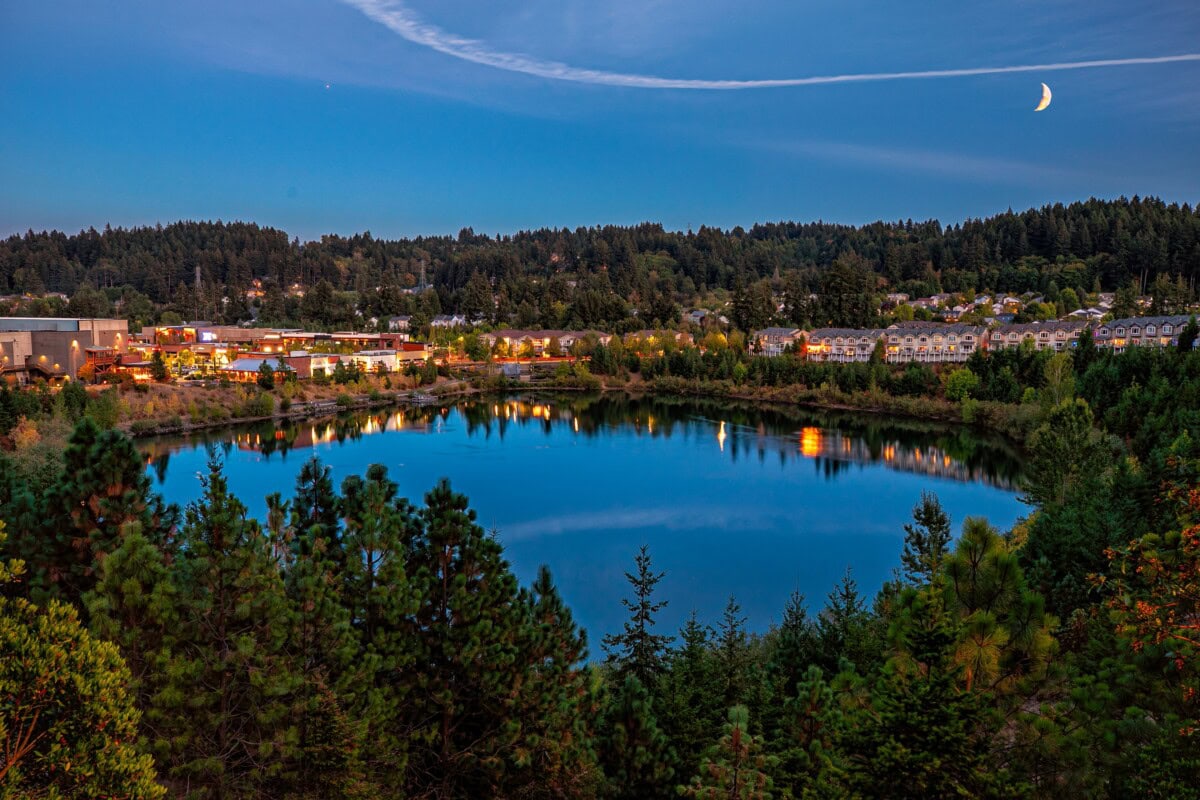
7. Beaverton, OR
| Population:
97,053 |
Average Commute Time:
25.2 minutes |
Per-Capita Income:
$41,002 |
| Median Sale Price:
$550,000 |
Median Rent Price:
$1,965 |
Unemployment Rate:
2.8% |
Beaverton is the seventh city on our list of the best places to live in Oregon. Tucked between the West Hills and Tualatin Valley farmlands, Beaverton contains big-city amenities while maintaining its rural and suburban charm. Plus, it’s only seven miles from Downtown Portland and is along the MAX Red Line, meaning easy access into the city. Beaverton is known for being home to the Nike and Intel headquarters.
Beaverton is an incredibly fertile, green, and clean place to live. Infrastructure is well maintained, bike lanes are everywhere, and forests and streams dominate the landscape. And most impressive of all are the endless trails, parks, and paths. The Westside (Powerline) Trail, Cooper Mountain Nature Park, and Tualatin Hills Nature Park are popular spots.
An important aspect to keep in mind is that Beaverton has pushed its urban boundaries out quite a bit in the past decade, which has led to a lot of changes to local farms and agriculture. Many beloved U-Pick farms and local markets have been turned into new housing developments and schools. Beaverton just recently (unofficially) passed 100,000 residents, after all, and the city wants to keep growing.
Plenty of local farms are still around, though, including Hoffman Farms Store, Oregon Heritage Farms, and Smith Berry Barn. There are also many gorgeous vineyards in and around the area that are popular among locals, like Cooper Mountain Vineyards and Raptor Ridge Winery. The Beaverton Farmers Market is also a beloved Saturday tradition operating year-round.
Beaverton homes for sale | Beaverton houses for rent | Beaverton apartments for rent
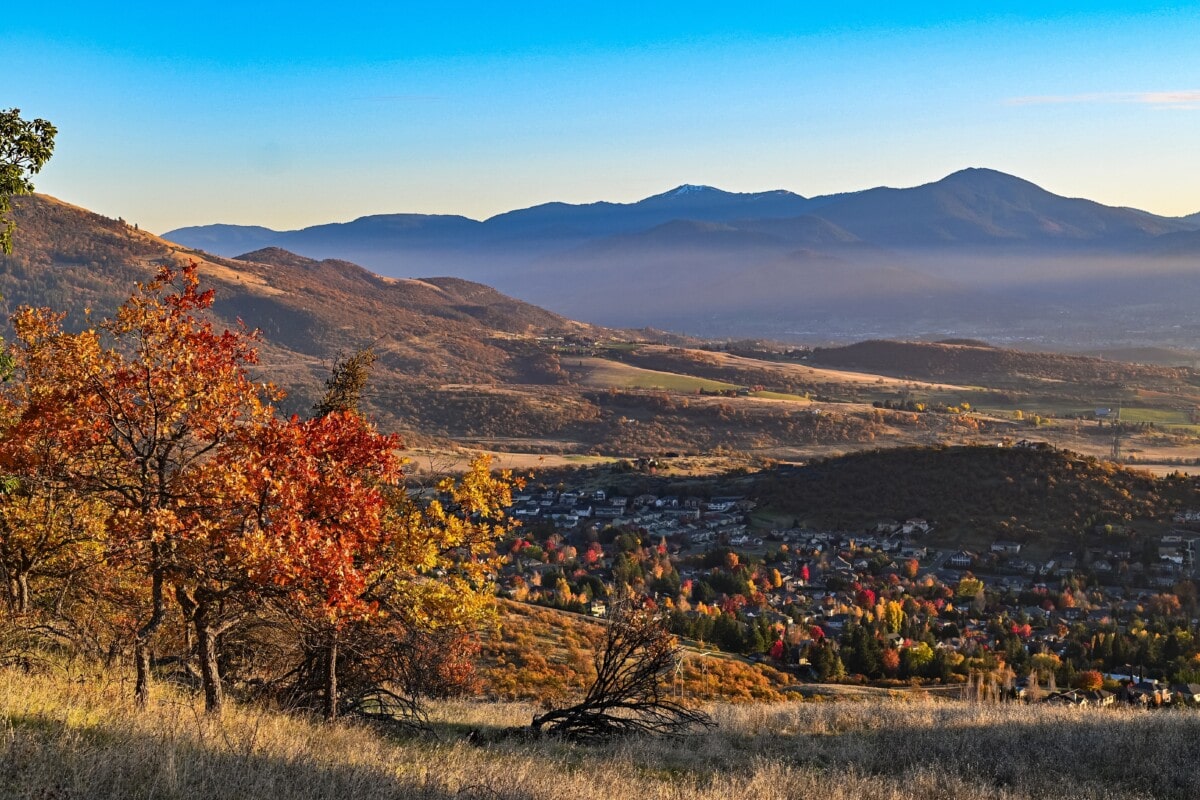
8. Medford, OR
| Population:
85,556 |
Average Commute Time:
16.9 minutes |
Per-Capita Income:
$28,040 |
| Median Sale Price:
$414,805 |
Median Rent Price:
$1,605 |
Unemployment Rate:
3.1% |
Located in Southwestern Oregon, just 31 miles north of the California Border, Medford is the eighth city on our list of the best places to live in Oregon. The city is in the Rogue Valley south of the Willamette Valley, which means there is plenty of recreation, farming, wine, and natural beauty. The Rogue River runs from nearby Crater Lake National Park to the Pacific Ocean, while Mount Ashland and Mount McCloughlin provide trails, winter recreation, and vistas. The Table Rocks are another landmark.
Living in Medford also means you’re close to whitewater rafting in Grants Pass and the famous Shakespeare Festival in Ashland. If you would rather stay within city limits, there are brewpubs, wineries, and artisanal cuisine within walking distance. Wild River Brewing and Pizza, DANCIN Vineyards, and Tartine are great spots for a lunch or evening event.
Medford’s climate may also be a welcome bonus. The city is in a rain shadow between the Siskiyou and Cascade Mountains, meaning its climate is more akin to Eastern Oregon than you would expect. Medford sees half as much precipitation as Portland and Eugene (~18 inches vs. ~40 inches), with most of it coming during the cool winter months. Summers are hot and dry. Fog and temperature inversions in the winter can also play a large role in daily life by limiting visibility and air quality fairly significantly.
Medford homes for sale | Medford houses for rent | Medford apartments for rent
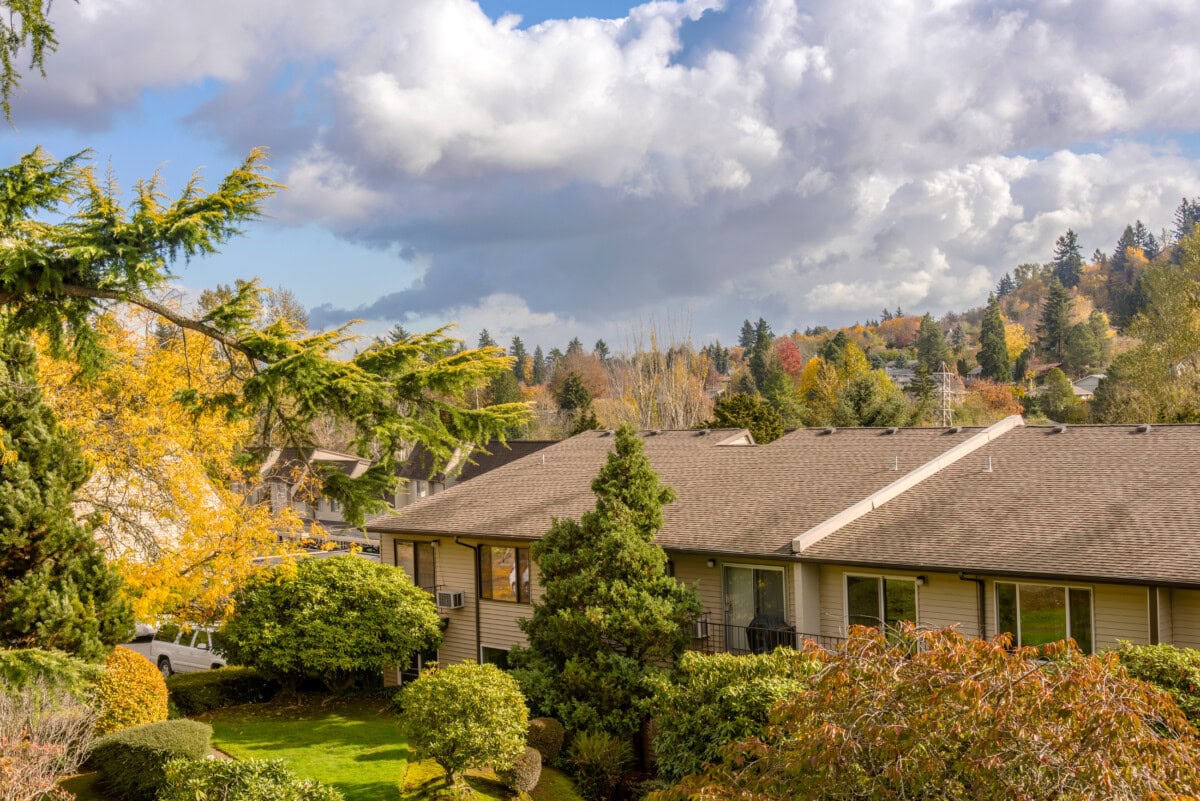
9. Gresham, OR
| Population:
111,621 |
Average Commute Time:
28.5 minutes |
Per-Capita Income:
$27,811 |
| Median Sale Price:
$514,500 |
Median Rent Price:
$1,659 |
Unemployment Rate:
3.7% |
Gresham is a far-eastern suburb of Portland (in what’s known as East County) and is known for its variety of amenities, suburban feel, and proximity to vibrant natural beauty. Gresham covers a fairly large area and contains everything from a lively downtown, to riverside marinas, to rural farmland. The city is often lumped together with nearby Troutdale.
Outdoor recreation is a huge part of life in Gresham. Some of the most popular outdoor spots are the Powell Butte Nature Park, Main City Park, Sandy River Delta, and the 21-mile Springwater Corridor Trail. You’re also just over an hour from Mount Hood. When the mountain is out during a clear day, the view will make you yearn to be on its slopes.
Many people live in Gresham and work in downtown Portland. As such, it’s fairly easy to commute into the big city along Highway 26, Interstate 84, on the MAX Blue Line, which runs most of the day, every day. Driving during rush hour can take quite a while, though. In fact, the Portland area has the 10th-worst rush-hour traffic in the nation. The region is continually working to improve its navigability, though.
Gresham homes for sale | Gresham houses for rent | Gresham apartments for rent
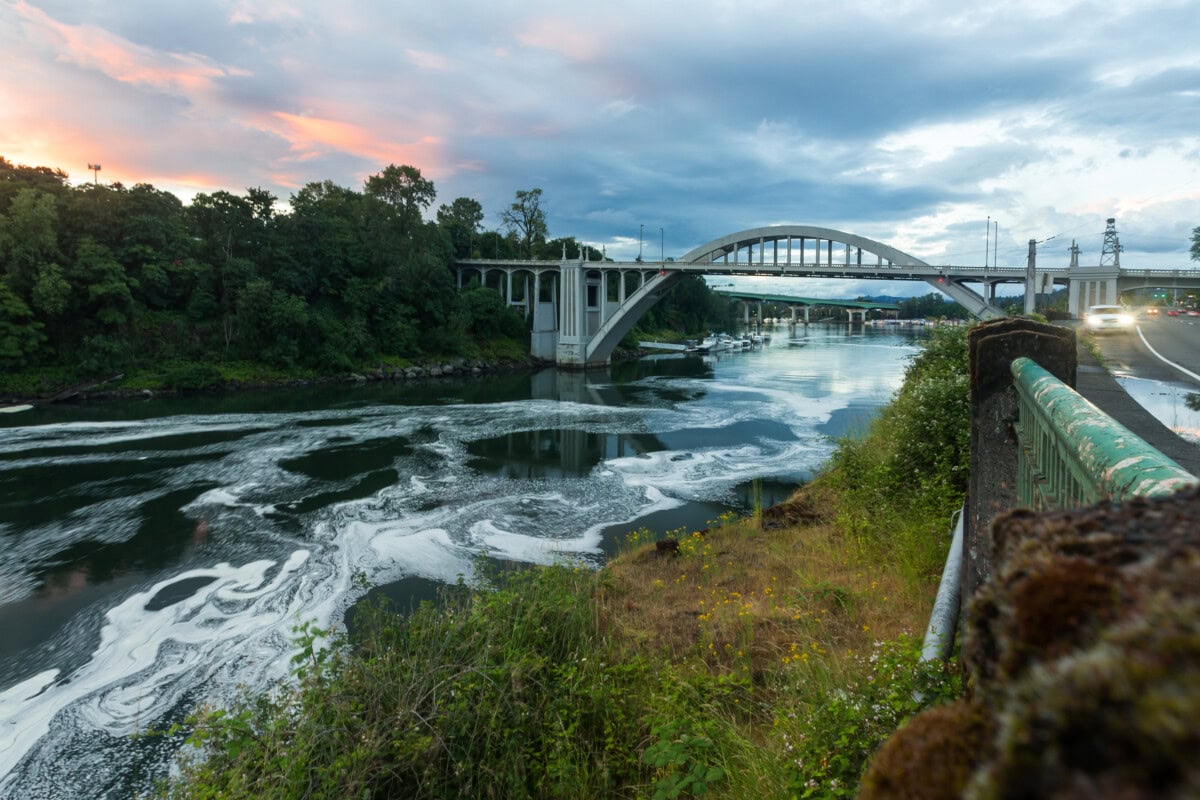
10. Oregon City, OR
| Population:
37,327 |
Average Commute Time:
29.8 minutes |
Per-Capita Income:
$35,444 |
| Median Sale Price:
$597,185 |
Median Rent Price:
$2,016 |
Unemployment Rate:
3.0% |
Oregon City rounds out our list as the tenth-best place to live in Oregon. A far southwestern suburb of Portland, Oregon City is known for its industrial history, riverside views of the Willamette, and being the final stop on the Oregon Trail. While Oregon City is a suburb, it has its own vibe and locals view it as a distinct city. The climate is nearly identical to Portland, though.
History is one of the best parts of living in Oregon City. In the center of the city are the Willamette Falls, the site of the country’s first long-distance electric line and a major milestone of hydroelectric power. Just northeast of that is the Municipal Elevator, the only outdoor municipal elevator in the U.S., which vertically connects two levels of the city separated by a bluff. The McLoughlin House, Museum of the Oregon Territory, and End of the Oregon Trail Interpretive Center are nearby as well.
While Oregon City is small, it’s still home to plenty of good food and breweries. Some popular spots include Canard, Oregon City Brewing Company, Tony’s Fish Market, and Mi Famiglia Pizzeria.
Oregon City homes for sale | Oregon City houses for rent | Oregon City apartments for rent
Methodology
Redfin’s Best Places to Live rankings are meant to help home searchers make an informed decision when choosing where to live. To attempt to measure the overall quality of a metro area, each ranking takes into account several key factors, including access to healthcare, open outdoor space, navigability, housing trends, employment statistics, income, and travel time to work. Only metros with a population of 20,000 or greater were considered for our Oregon list. More information about our methodology can be found here.
Data valid April 2024. This article is for informational and educational purposes only.

